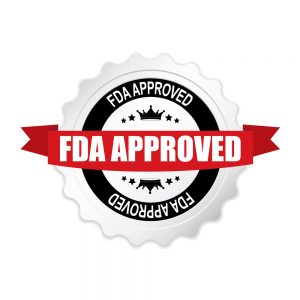FDA e-cigarette Regulations
[vc_row][vc_column][vc_column_text]
What are the FDA regulations for vape products?
Overview
Section 910 of the Federal Food, Drug and Cosmetic Act pertains to e-cigarette regulation in the United States. Published in May 2016, it came into effect on 8th August 2016.
E-liquids and e-cigarettes are now categorized as ‘new tobacco products’ and are regulated by the FDA. New rules mean information on the product must be submitted for review by the FDA prior to marketing.
Top level requirements
> Sale to minors prohibited; free sample ban;
> Child-resistant packaging; health warning statement on label
> Registration of domestic manufacturers and submission of product listing
> Premarket review and an order by the FDA authorizing the marketing of the product
Routes to market
There are several regulatory pathways available to manufacturers. The route most likely to be used by applicants is the Premarket Tobacco Product Application (“PMTA”).
Draft guidance on a PMTA is available on the FDA’s website.
Key information has been extracted from the draft guidance along with information from a summary report on a previously submitted and approved PMTA by the tobacco company, Swedish Match.
Key elements of the PMTA
- Non-clinical data: A toxicological and pharmacological evaluation of each ingredient, mixture of ingredients and aerosols produced by the new tobacco product is required. Include toxicological data from literature; analysis of toxicants in heated and unheated form; carcinogens, mutagens, reprotoxins; computational modelling.
- Clinical Trials: A number of clinical trials maybe required to demonstrate risks and benefits to the population as a whole (users and non-users), among other things.
- Other studies: Observational studies and sales data to demonstrate user behaviour, for example.
- Product characteristics: Components, ingredients, additives, properties and operation. Include specification of batteries amp/voltage etc.
- Comparison to Reference product: Applicant to demonstrate the product meets a defined standard or deviates from a standard with justification.
- Manufacturing details: Description of manufacturing process, quality controls and facilities.
- Mock-ups of packaging and labelling. New labelling rules apply.
- Samples for analysis by FDA
- Site Inspection: An inspection of manufacturing and clinical trial site by FDA forms part of the PMTA review process.
 Structure of a PMTA dossier
Structure of a PMTA dossier
Cover Letter
A General Information
B Table Of Contents
C Descriptive Information
D Product Samples
E Labeling
F Environmental assessment
G Summary of all Research Findings
H Scientific Studies and Analyses:
H.1 Product analyses and Manufacturing: Components, ingredients and additives; Properties; Principles of operation; Manufacturing
H.2 Non-Clinical and Human Subject Studies: Non-clinical health risk information; Human health impact information: Consumer Perceptions; Likelihood of initiation and cessation by users and non-users of tobacco products; Product Use Patterns; Labelling comprehension, self-selection and actual use; Human factors; Abuse liability; Biomarkers of harm and biomarkers of exposure; Health outcomes
A Closer look at Product Analyses and Manufacturing section
The contents of this section could look a little like this:
- Description & Composition
- Development of product
- Manufacture:
- Excipients
- Control of Product
- Container Closure System
- Shelf Life
Let’s take a look at 2 sections for a 12mg e-liquid (values are for demonstration purposes):
1. Description & Composition
This section should include a brief description of the product and the container. The formulation can be presented in the following way:
[table id=2 /]
5. Control of Product
This section should include the Product Specification, which is a list of tests and corresponding test limits.
[table id=3 /]
Steps in the process
- Pre-submission meeting with FDA (optional)
- Electronic submission of PMTA via electronic portal
- Validation step: FDA confirms receipt and accepts/rejects dossier based on cursory review
- FDA begins review (involves the Tobacco Product Scientific Advisory Committee)
- 2nd Validation step: FDA letter confirms filing
- Request for further information by FDA
- Applicant responds to questions
- FDA issues letter of approval/rejection
During the process the FDA may conduct an inspection of manufacturing site / clinical trial sites and analyse samples provided as part of the PMTA review.
Duration
Officially, the FDA has 180 days to review but the time taken may vary due to complexity of product and response time of applicant.
How to submit
Submission should be via the FDA’s electronic portal, the ESG (Electronic Submission Gateway). Rules apply to the format of the electronic dossier.
When to submit
PMTA should be submitted by 8th August 2022 (for combustible tobacco products the deadline is 2021).
PMTA for a range of e-liquids
A single PMTA can be submitted for a flavour with range of nicotine strengths. A single PMTA may also cover multiple flavours if the same flavour ingredients are used – the only difference being the quantity of the individual ingredients.
Zero nicotine e-liquids
Zero nicotine e-liquids are in scope of FDA regulation if they are “intended” and “reasonably expected” to be used with e-cigarettes.
Role of Tobacco Product Master Files
Tobacco Product Master Files (TPMF) may play an important role in the new regulatory environment. They allow for companies to gain a marketing order by the FDA for a product and authorise other businesses to refer to the marketing order while keeping proprietary information – for example e-liquid flavour formulation – confidential.
The pharmaceutical industry features a TPMF-based business model and has proved to be successful way forward for many manufacturers, large and small.
Supporting data: Alternatives to clinical trials
Clinical trial data is an important part of the supporting data of a PMTA. However, it may be possible to support a PMTA without conducting clinical studies. Observation studies or bridging studies based upon published literature studies may be sufficient.
How can Medic Pro Help?
Given the similarities in the requirements, our knowledge and experience in preparing medicine registration dossiers allows us to help applicants build a PMTA dossier for submission. Contact us to learn more about how we can help.
[/vc_column_text][/vc_column][/vc_row]
What We Do
We are a London-based regulatory affairs consultancy providing services to the e-cigarette, cosmetic, biocide, pharmaceutical and medical device industry. We help e-cigarette companies comply with the Tobacco Products Directive and pharmaceutical companies obtain and maintain medical product licences. We also offer UKAS accredited biocide and analytical testing services.
 Structure of a PMTA dossier
Structure of a PMTA dossier
